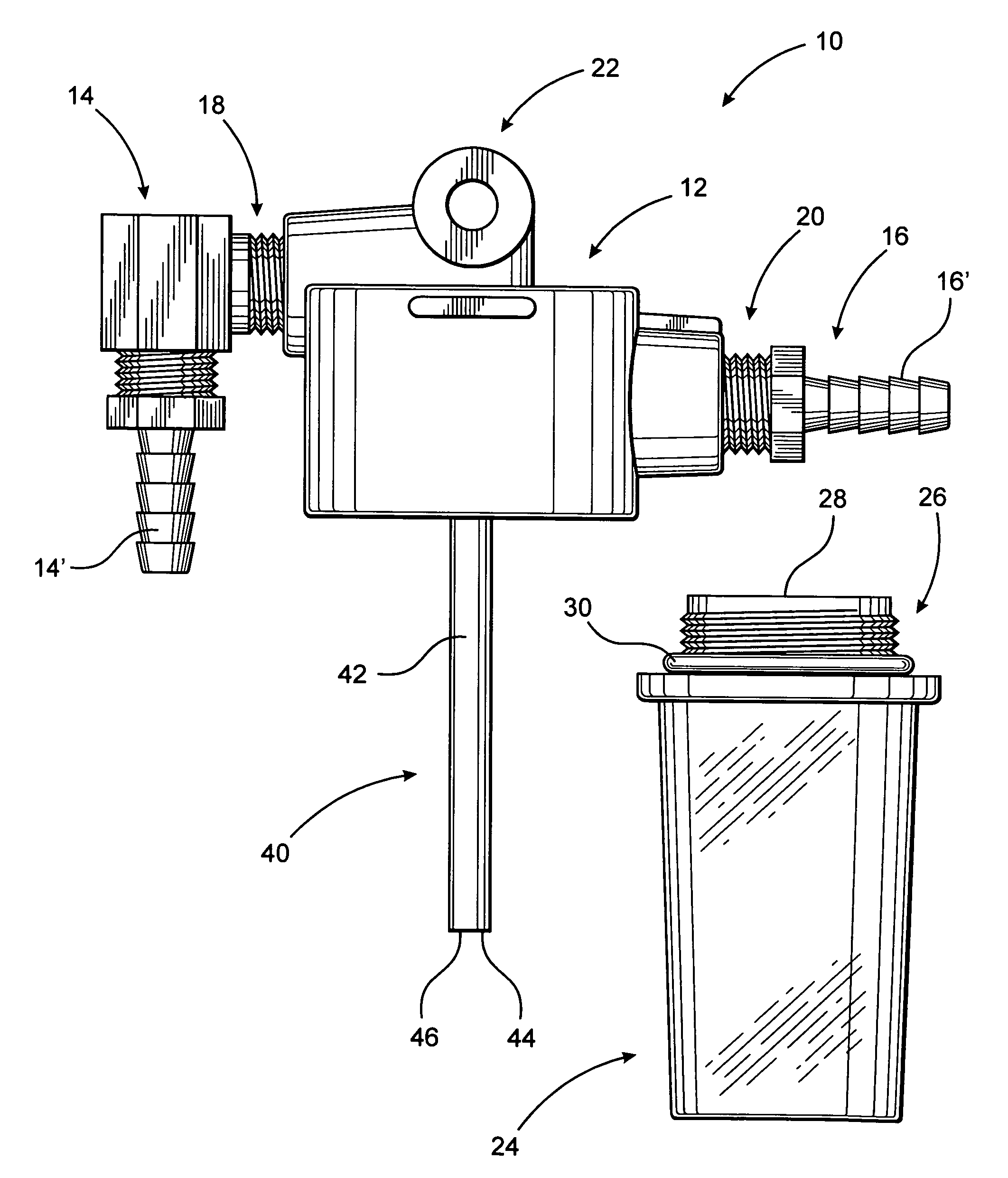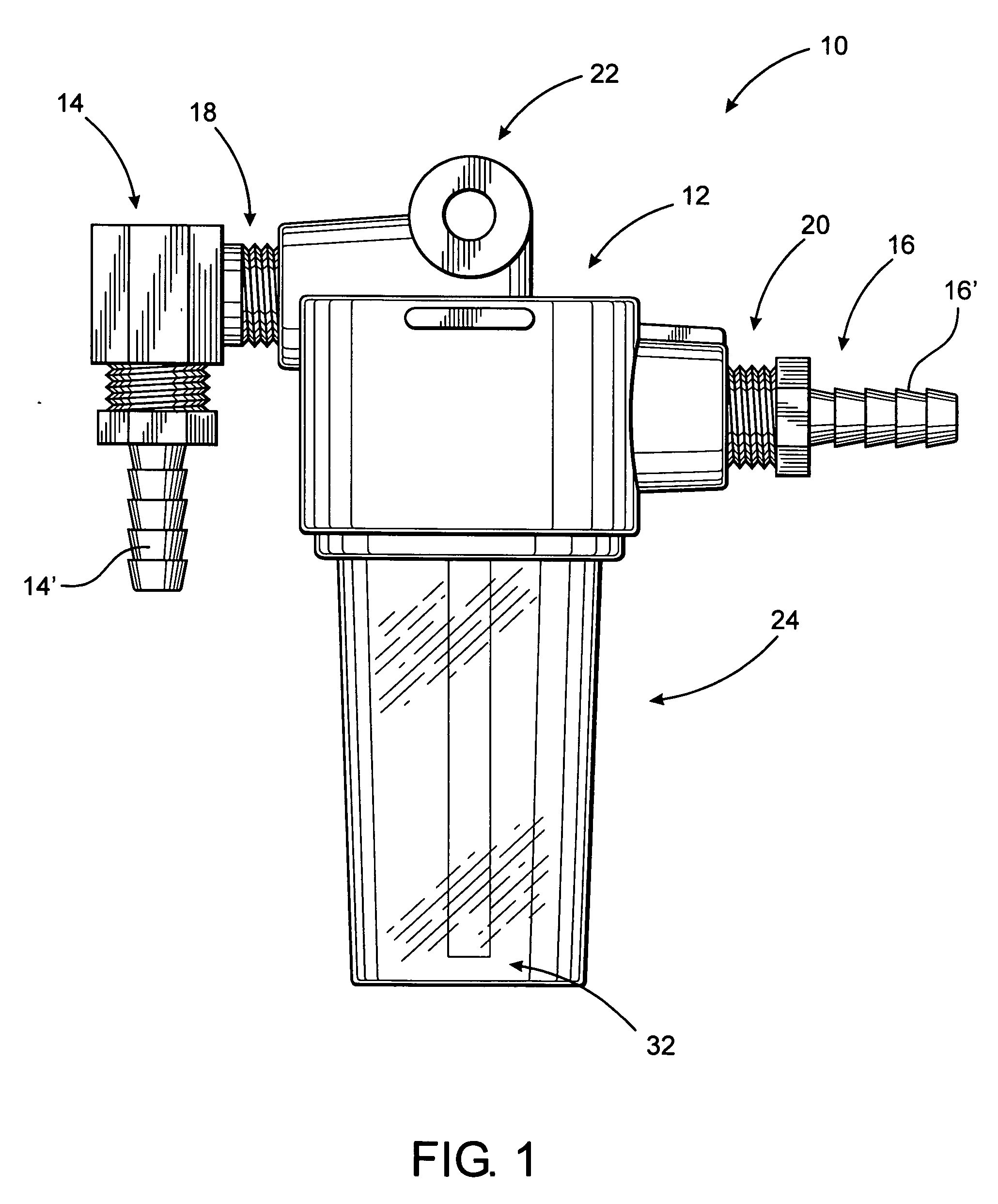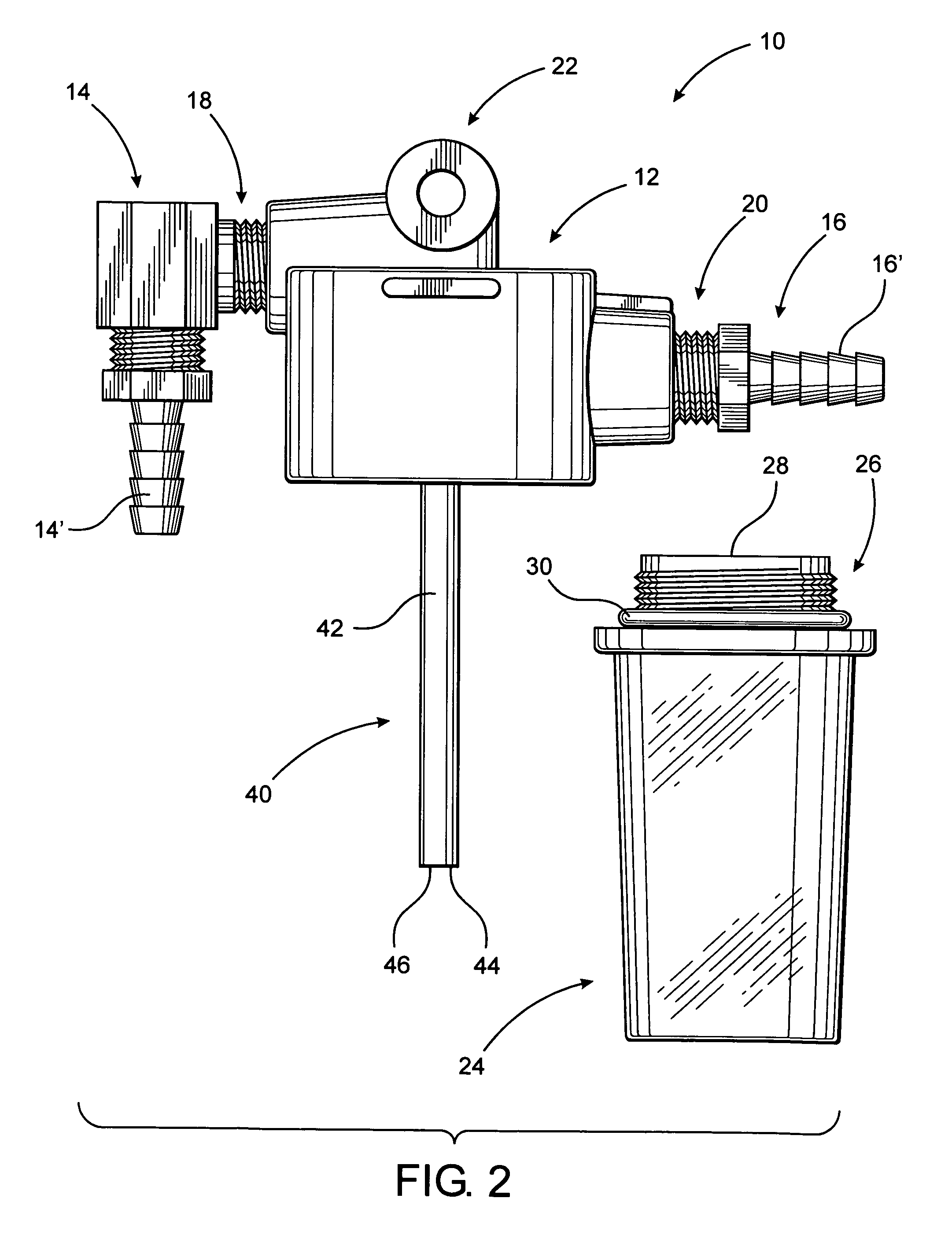Simplified oil sampling assembly
a technology of oil sampling and assembly, applied in the field of oil sampling assembly, can solve the problems of serious damage to the sampler, inability to run the engine or machinery, and difficulty in oil sampling at operating temperature, so as to prevent any type of cross contamination, facilitate the transport, and eliminate the effect of “cross contamination
- Summary
- Abstract
- Description
- Claims
- Application Information
AI Technical Summary
Benefits of technology
Problems solved by technology
Method used
Image
Examples
Embodiment Construction
[0028]As shown in the accompanying drawings, the present invention is directed to a sampling assembly generally indicated as 10 which is adapted for collecting oil samples from engines, machinery, or other devices. As practically applied, the sampling assembly 10 is connected in fluid communication with an oil circulating system of the engine, machinery, etc.
[0029]As schematically represented in FIG. 3 and for purposes of clarity, the engine, machinery, etc. from which the oil sample is collected is generally indicated as 100 and includes a crankcase, oil reservoir or the like 102 as well as an oil circulating system 104. As schematically represented, the oil circulating system defines the path of travel of the oil as it flows throughout appropriate and predetermined portions of the engine, machinery, etc. 100. As will be explained in greater detail hereinafter, the sampling assembly 10 is connected in fluid communication with the oil circulating system 104. As a result, a continuou...
PUM
| Property | Measurement | Unit |
|---|---|---|
| temperatures | aaaaa | aaaaa |
| area | aaaaa | aaaaa |
| length | aaaaa | aaaaa |
Abstract
Description
Claims
Application Information
 Login to View More
Login to View More - R&D
- Intellectual Property
- Life Sciences
- Materials
- Tech Scout
- Unparalleled Data Quality
- Higher Quality Content
- 60% Fewer Hallucinations
Browse by: Latest US Patents, China's latest patents, Technical Efficacy Thesaurus, Application Domain, Technology Topic, Popular Technical Reports.
© 2025 PatSnap. All rights reserved.Legal|Privacy policy|Modern Slavery Act Transparency Statement|Sitemap|About US| Contact US: help@patsnap.com



